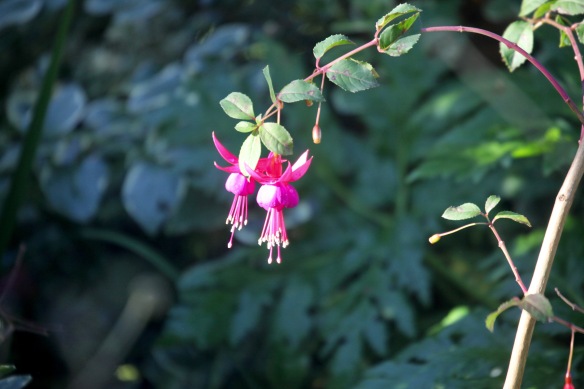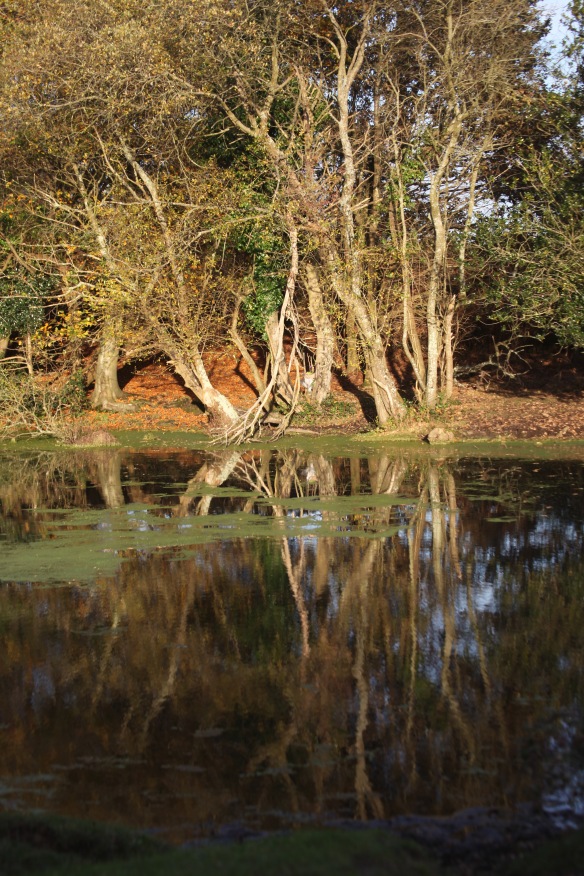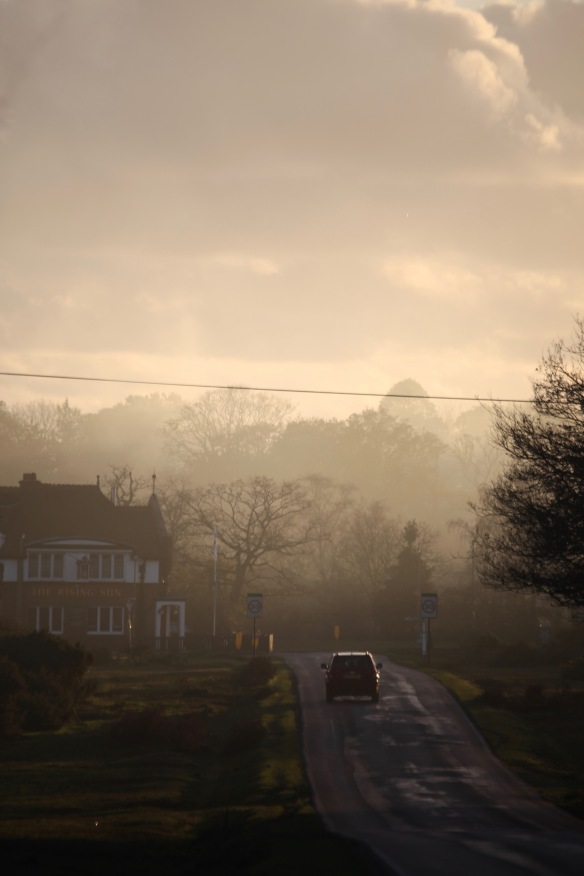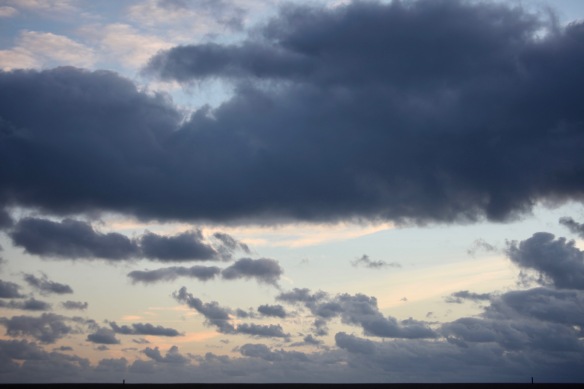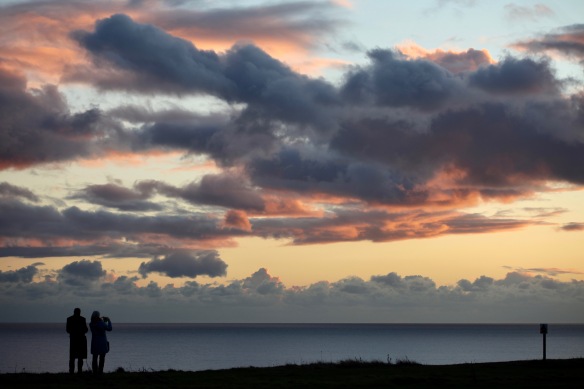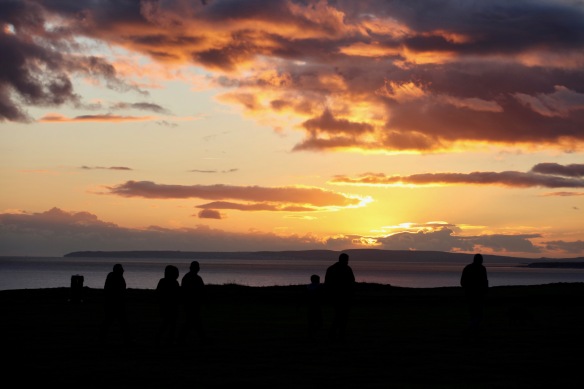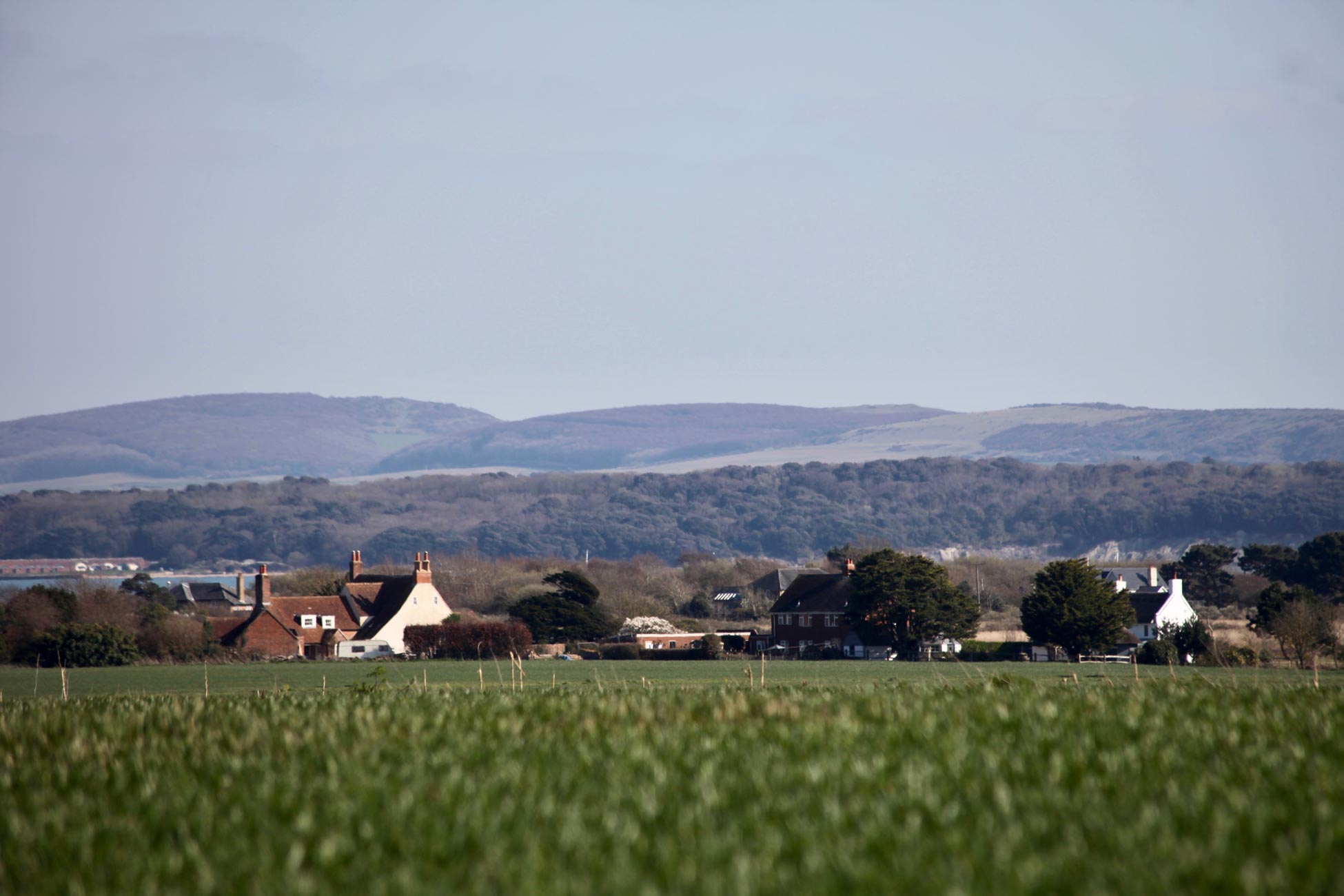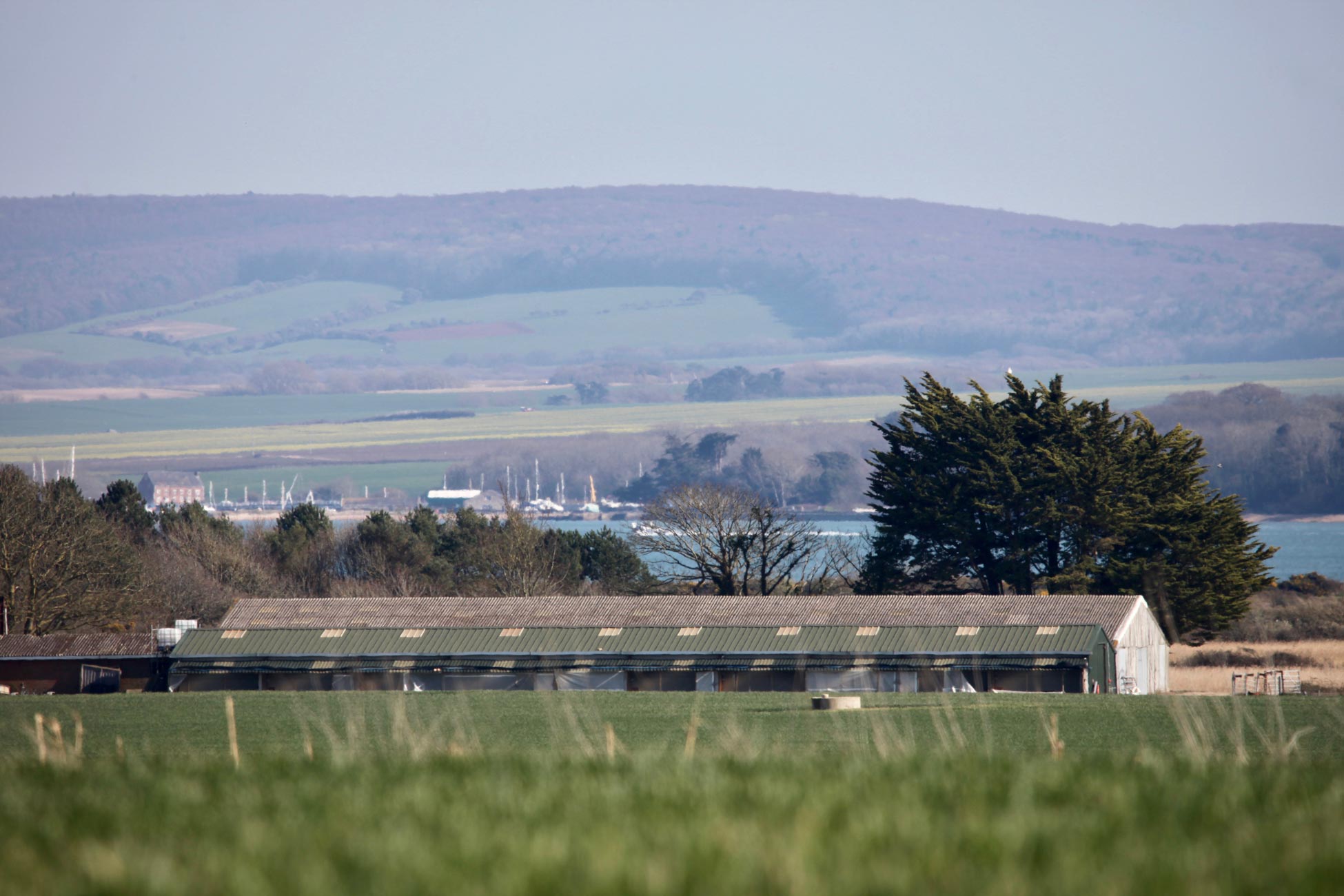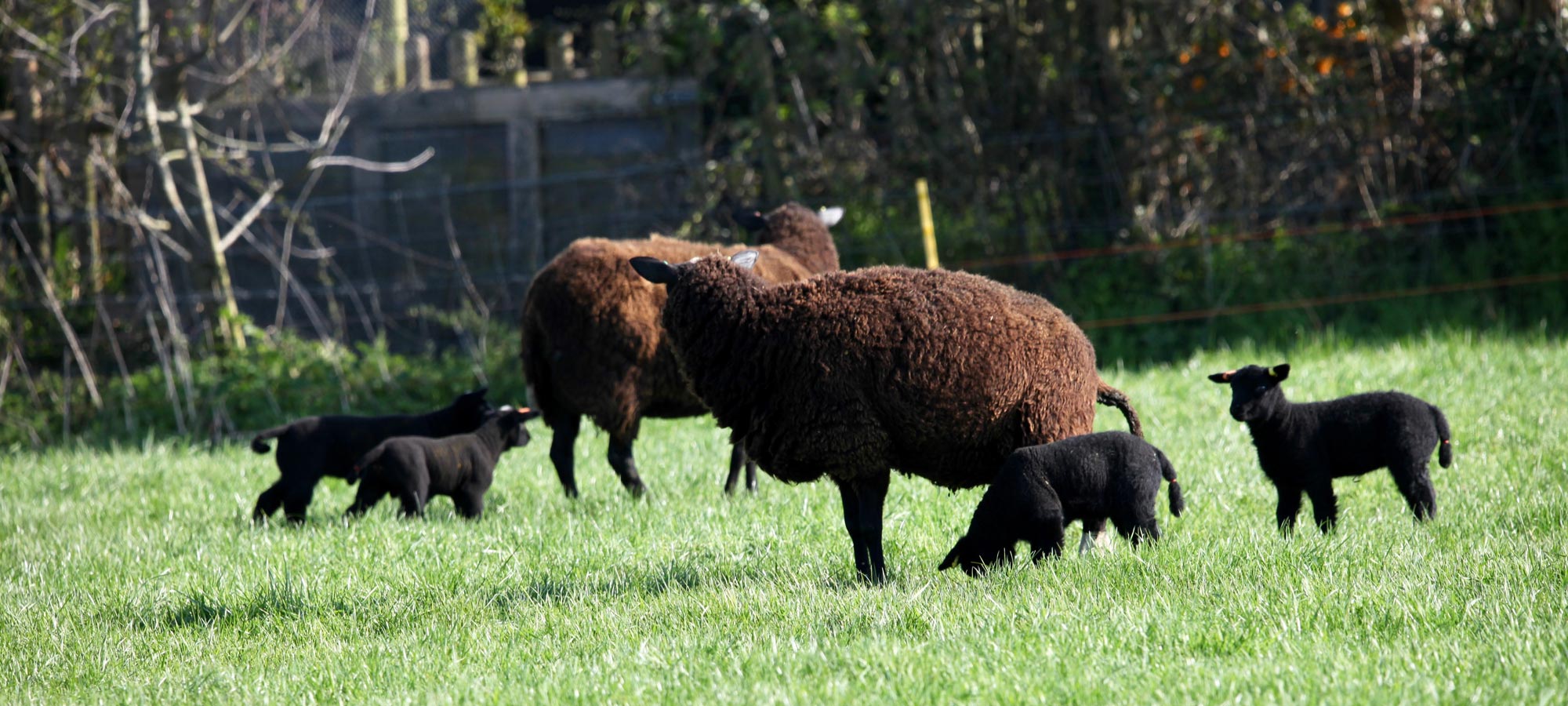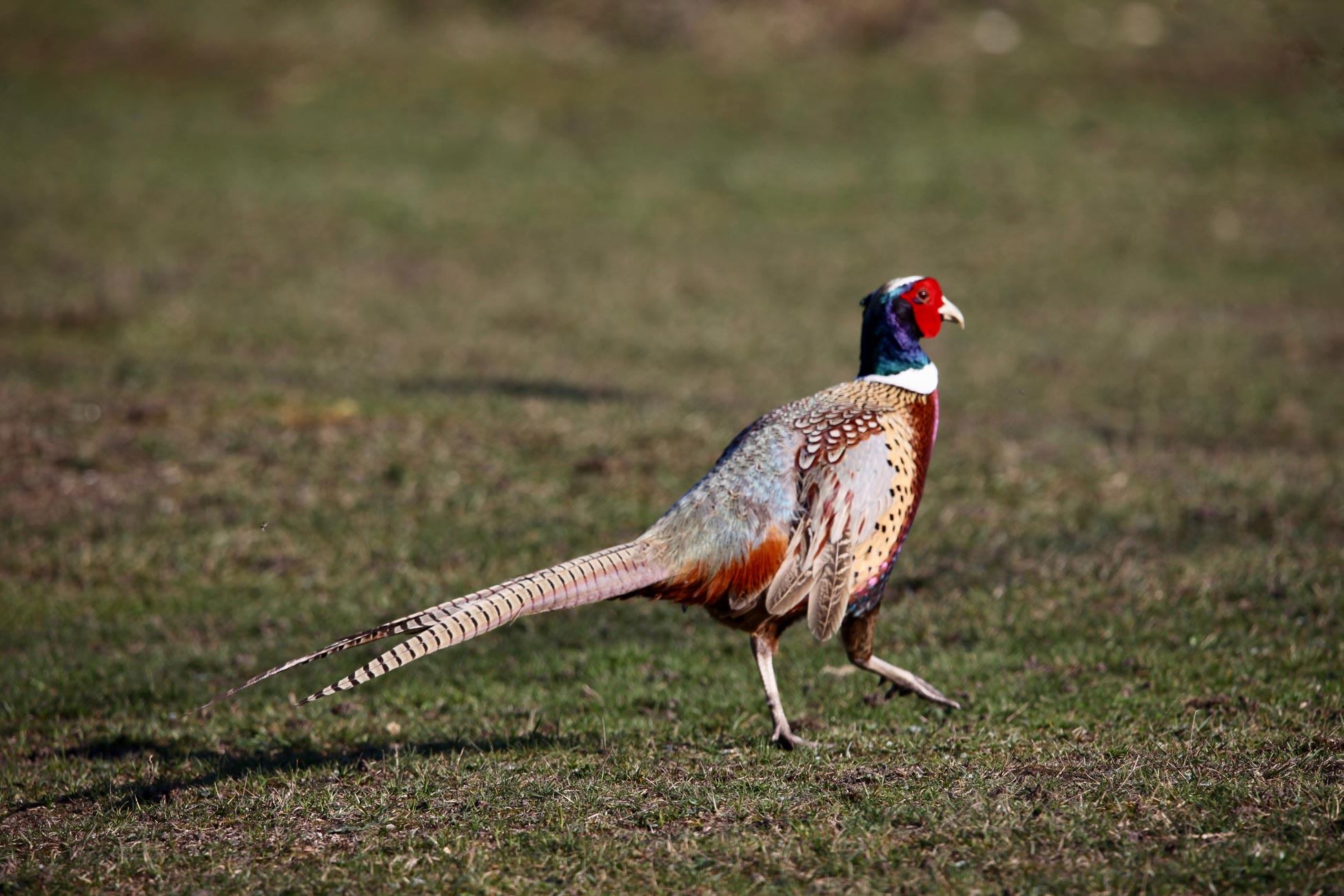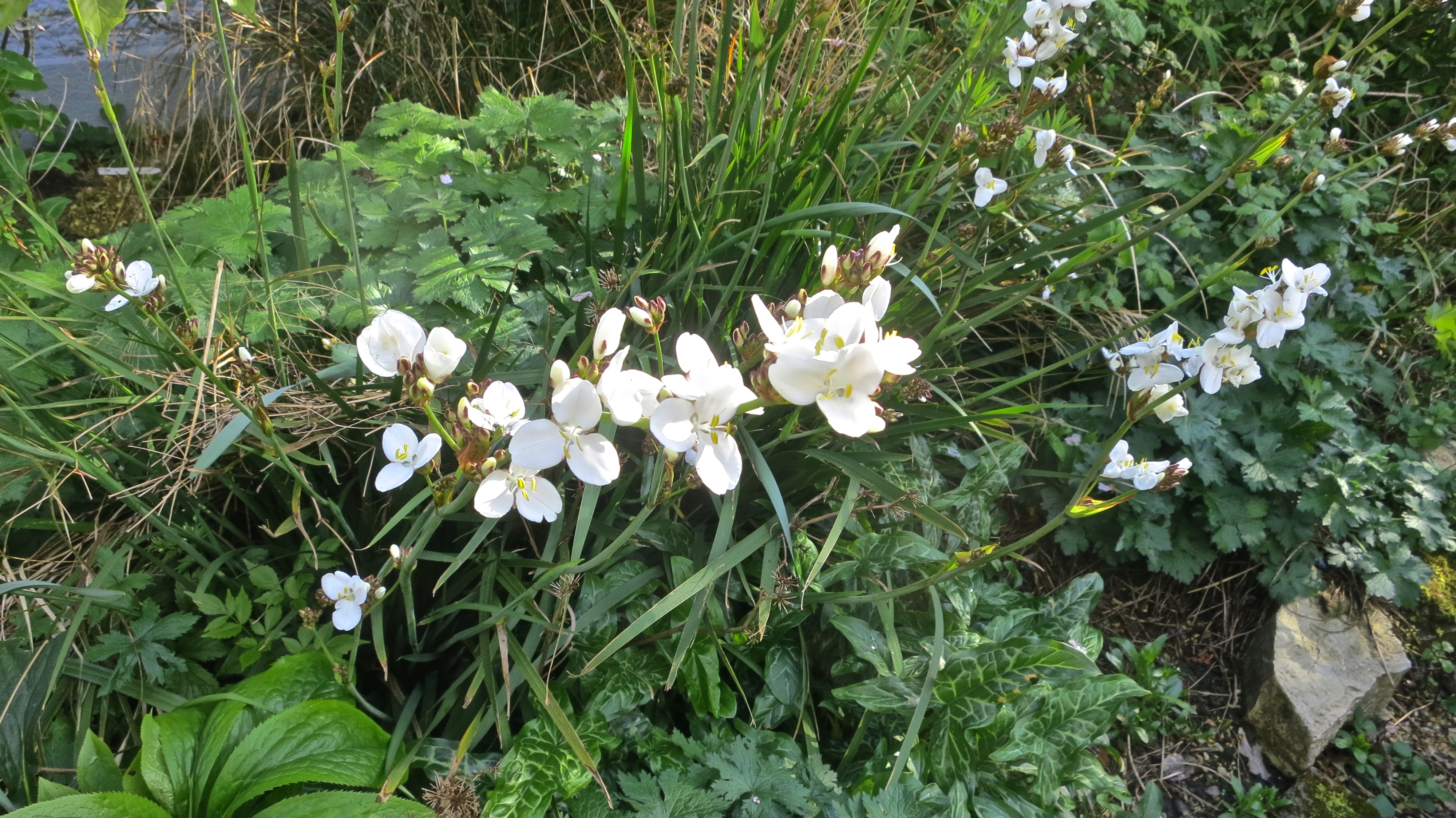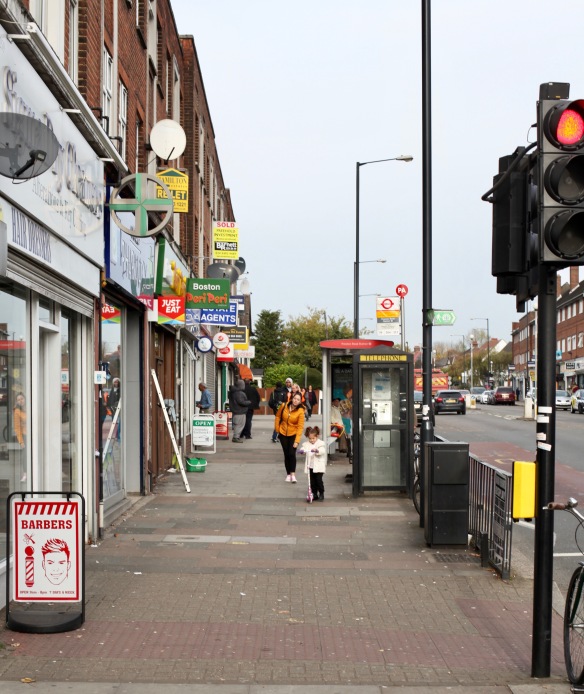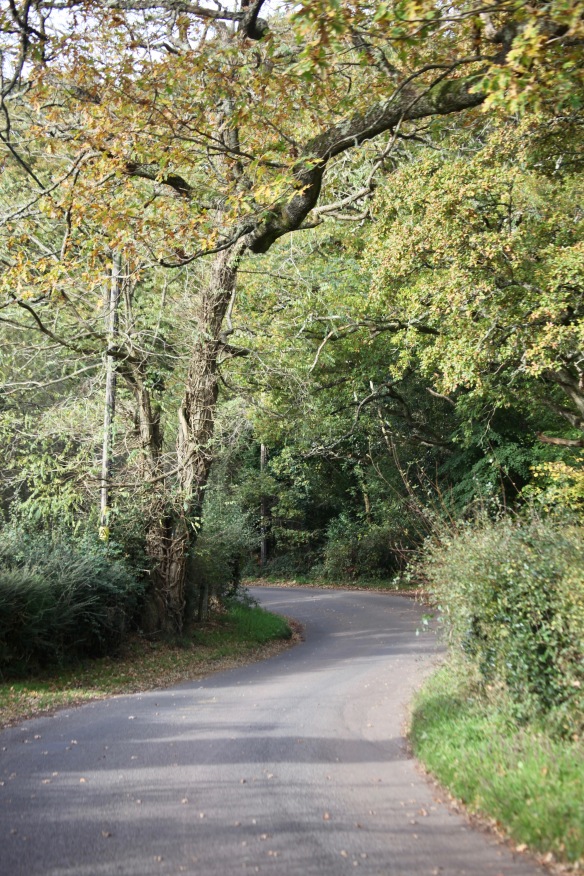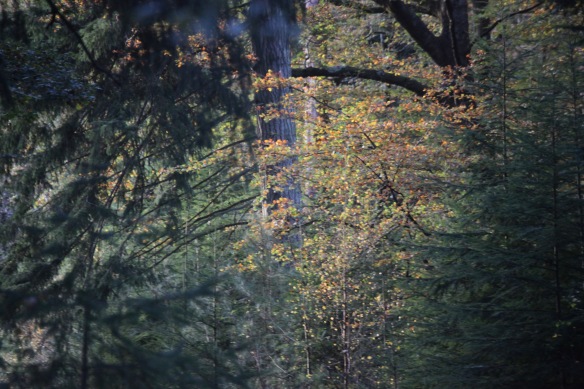For some time now, Aaron, our very own Green Man, has been working his way through the removal of the stumps of the old grizelinia hedging that he cut down a year or two back. This morning he completed the task.
We now have several clusters of snake’s head fritillaries;
orange and yellow epimedium, which here blends well a fading daffodil;
the ubiquitous honesty;
a range of hellebores preparing to drop their seeds;
and these wallflowers fronting euphorbia.
Birds such as darting goldfinches in the cypress, and cumbersome pigeons in the copper beech just coming into leaf are busy nesting.
Reminding me of ‘And What Came Next?‘, a Red Admiral butterfly and a fly slumber alongside each other beneath
catkins dangling from the weeping birch.
For a long, leisurely, lunch Mat, Tess, Poppy, Jackie, and I joined Sam, Holly, Malachi, and Orlaith at Hoburne, Bashley, holiday home site. The food, service, and facilities were excellent. I chose a fishcake and salad starter followed by a plentiful roast beef dinner. Others also enjoyed their selections. We shared Prosecco, one glass of which was free for each of the Mothers on their day. None of us could eat a dessert. Afterwards the adults sat in the sunshine while the children played football and generally ran about.




